Why is this the world’s most difficult cookie?
This is a French Macaron Troubleshooting Guide with photos and explanation for those trying to crack the code on the mysterious macaron. Macarons are the most difficult cookie for a reason. I found the process both fascinating and infuriating. I took photos along the way and made tons of notes. Once I figured them out, I jumped up and down with joy.
If you are close by and struggling, come over for a lesson. I’ll be glad to show you how to make them. If not, check out how to make macarons here. And if you are having issues, see if yours matches up to one of the many below. It will aid you in catching that elusive macaron.
Given that I live in a super humid climate, I have made a lot of bad macarons. The problem is, there aren’t a lot of resources out there showing what happens when macarons go bad or how to fix them. Or if there is, it’s just a wall of text. Let this pictorial journey of my mishaps be your guide to fixing or maybe preventing issues altogether. And feel free to chuckle at my mishaps. I sure did.
So you want to make cookies when it’s humid, eh?
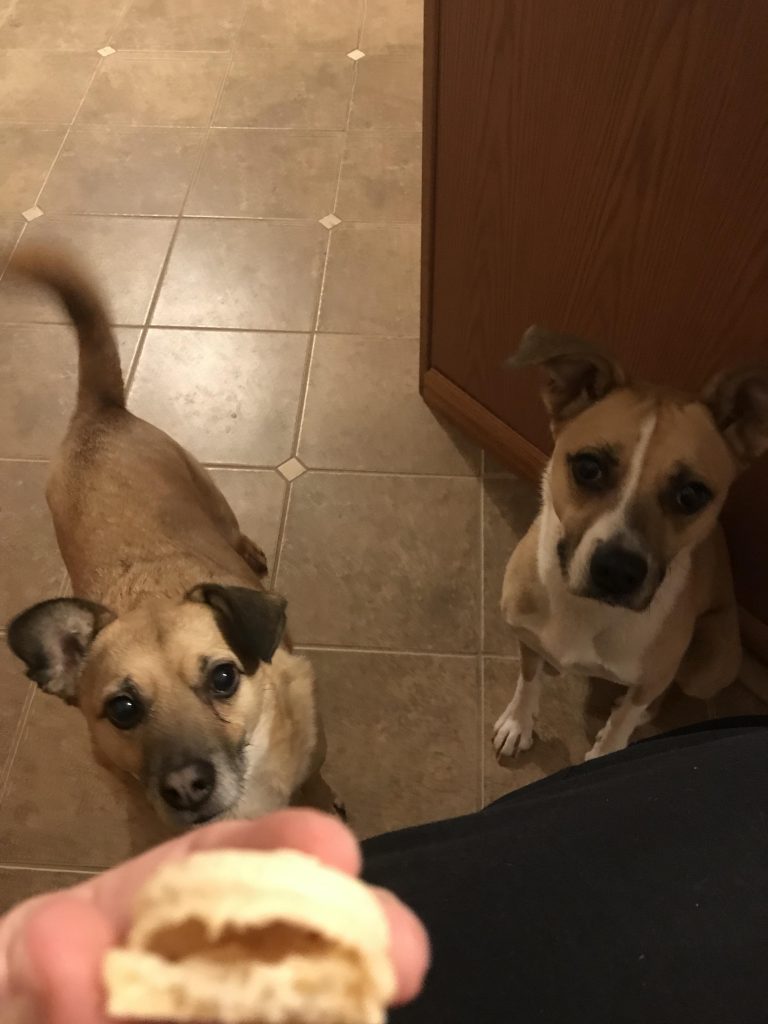
Everyone starts at the beginning. Make it a fun process. For instance, I made a lot of mistakes learning how to make the finicky macaron. Thankfully, I have some really happy dogs willing to eat those problem cookies.
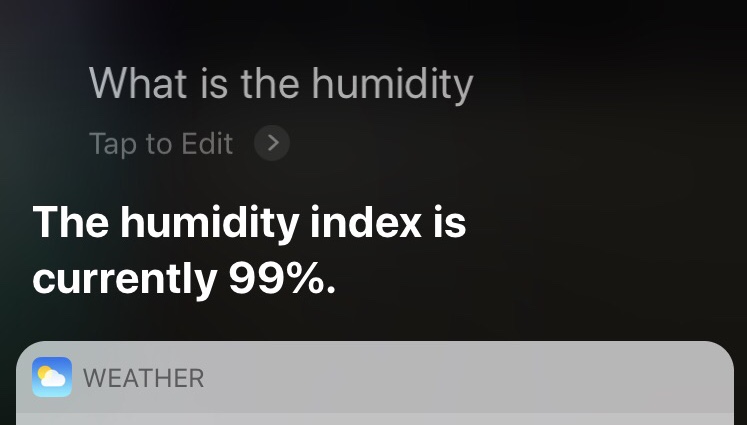
Begin by finding out the humidity in your area. What?!? 99% and you still want to make macarons? I so suggest another day altogether as the drying can take hours. But if you are like me, go ahead and try anyway! It’s hilarious when macarons become “mack-all-wrongs.”
What in the World Happened to Those Macarons?

This is a heated meringue. Two things happened here. They were under-mixed and not rested long enough. The fan in the convection oven blew them over as they began to rise.
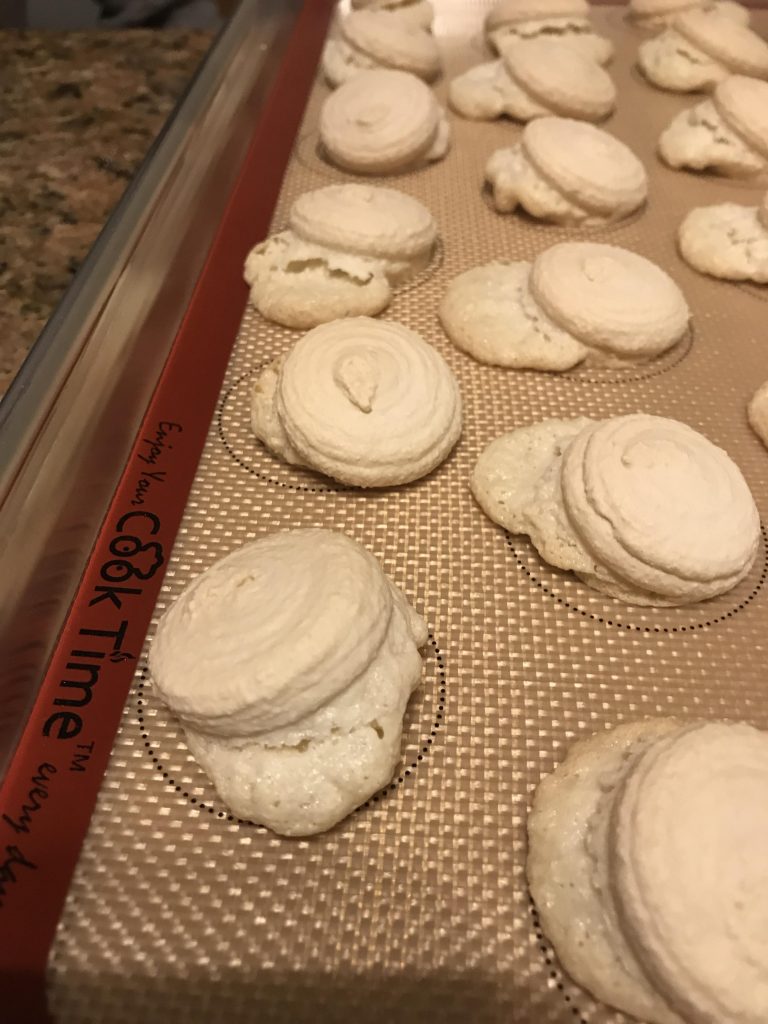
They tasted more like gritty almond meringue kisses. If you ever wondered what it was like to eat the chalk from a teacher’s classroom, I’m pretty sure this is it.
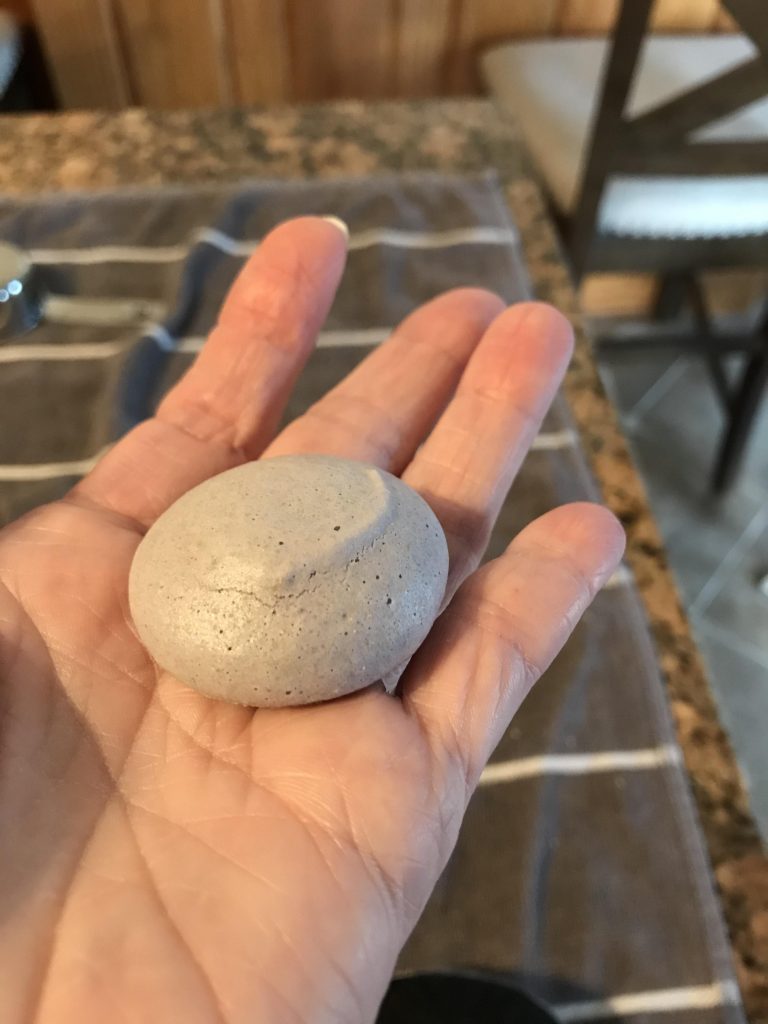
This is an example of a bad recipe. The sugar content is so skewed that it’s impossible to get a shiny texture. If you keep getting a chalky cookie and the batter is really sticky, or doesn’t seem to deflate, get a better recipe.
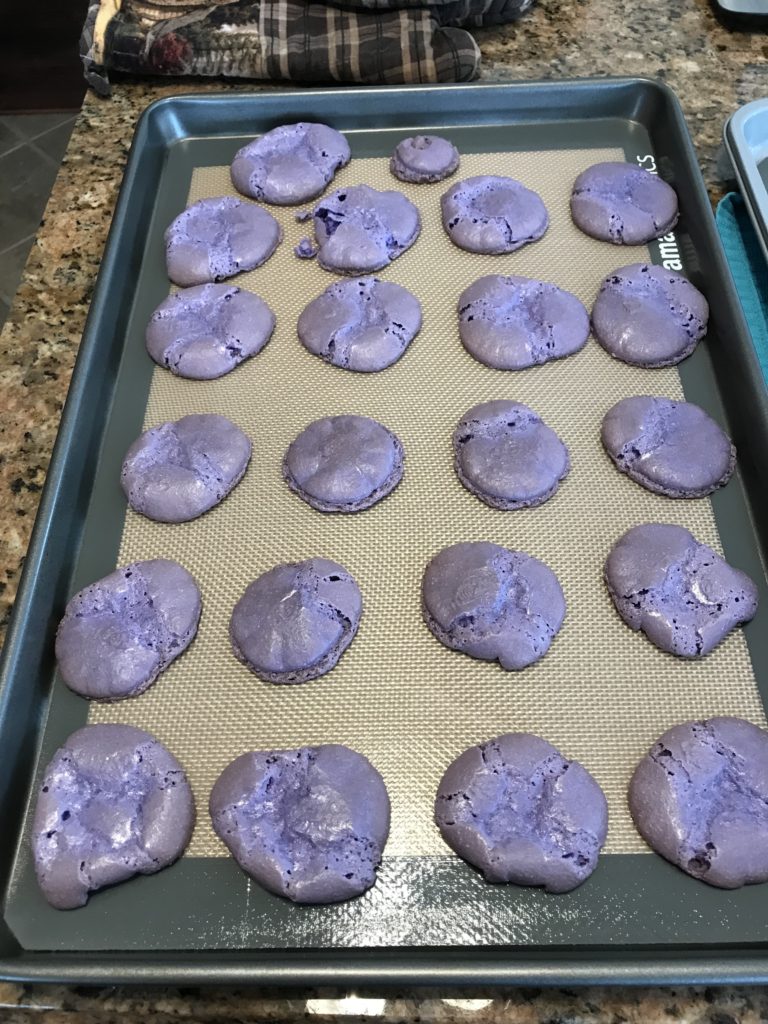
This is a heated meringue that was mixed more than the first batch, but still not enough and needed just a little more resting. They were very amusing.
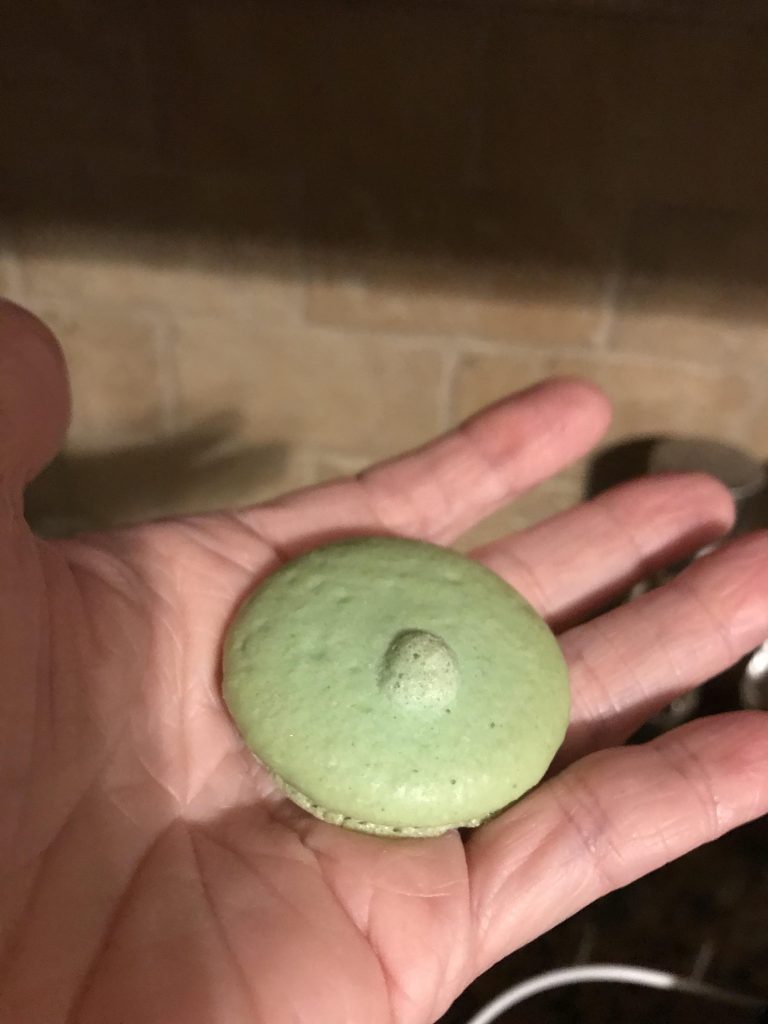
This is what happens when you under-mix your batter and try to fix it with the “wet finger” method of tapping down the tip. It will create a weak spot in the meringue.

If you don’t rest your cookies at all, this will be your result. Footless and cracked macarons. These are also well done. Baked at too high of a temperature.
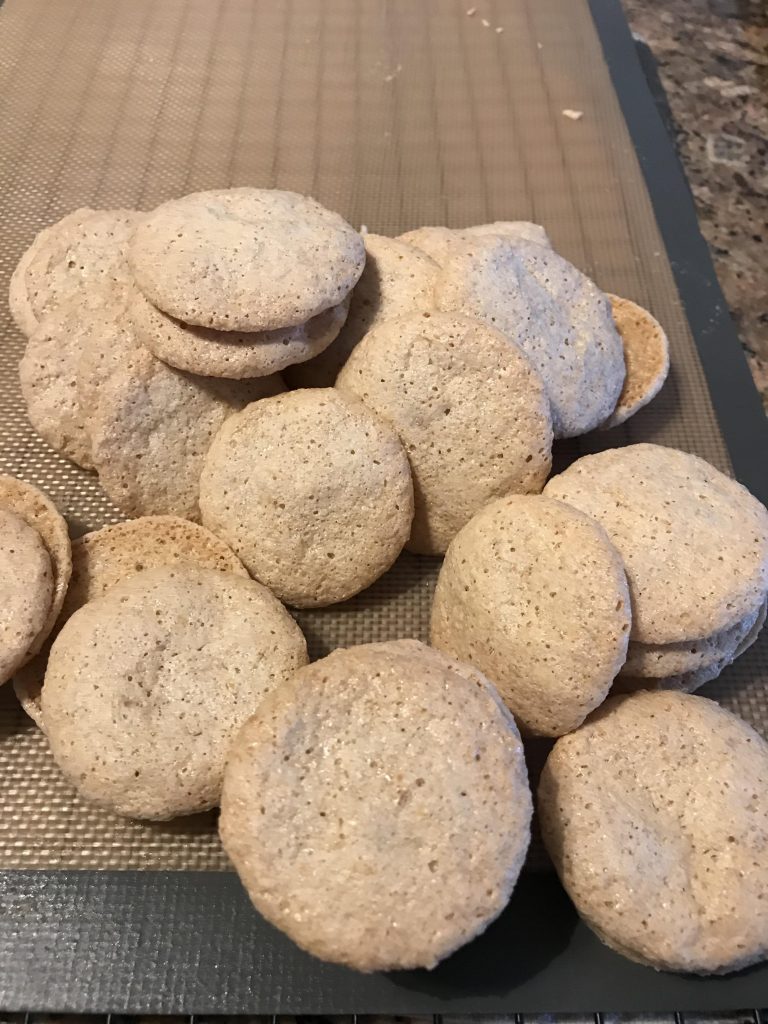
This is frequent when your meringue collapses. It can be caused by a number of reasons: not enough sugar in your meringue base, unstable whites like carton egg whites that weren’t intended for meringue or you over mixed your meringue.

With a weak meringue, you’ll have a puffy texture with micro bubbles throughout the cookie and no feet. This is actually a very tasty cookie as it’s super airy and light. This, in reality, is much of what the original almond puff that resulted in a macaron looked like.
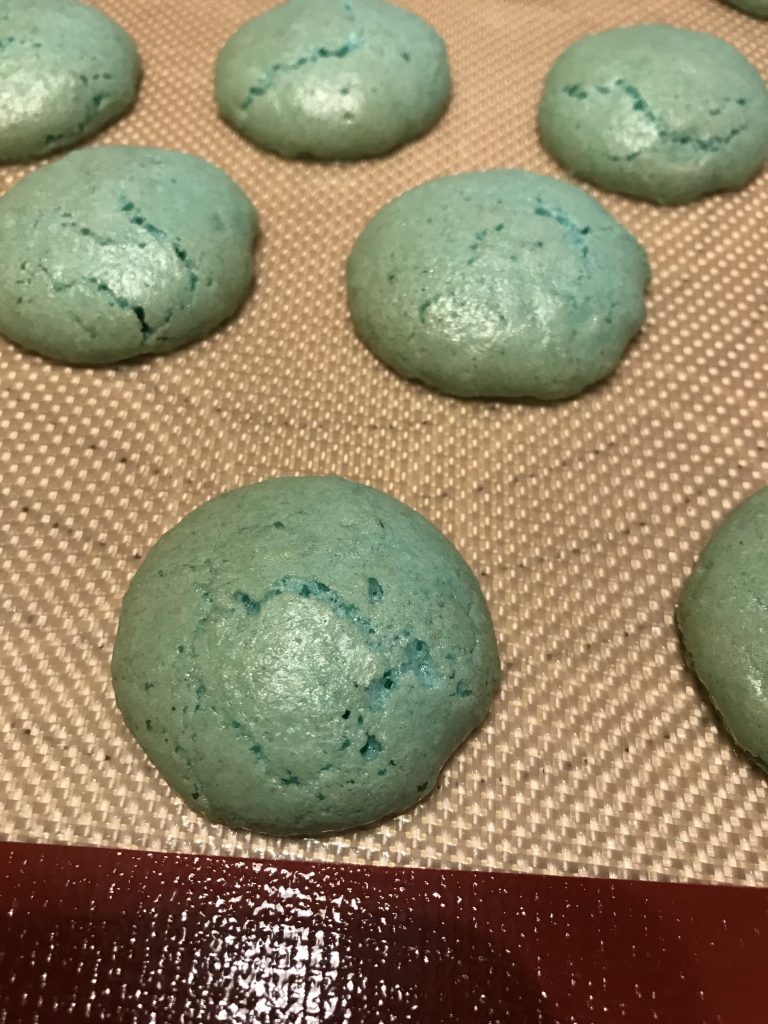
This is another example of a weak meringue. Again, notice the micro bubbles, the cracking and lack of feet. These are all signs of a meringue made from carton whites or overmixed. Also, the food coloring is a bit much don’t you think?

These oily, splotchy, thin shells with splayed feet is a sign of two things: the almond flour ratio is too high in the recipe or your almond flour is too oily. Dry out your flour and try again. If it happens again, the recipe is bad. Try another recipe.
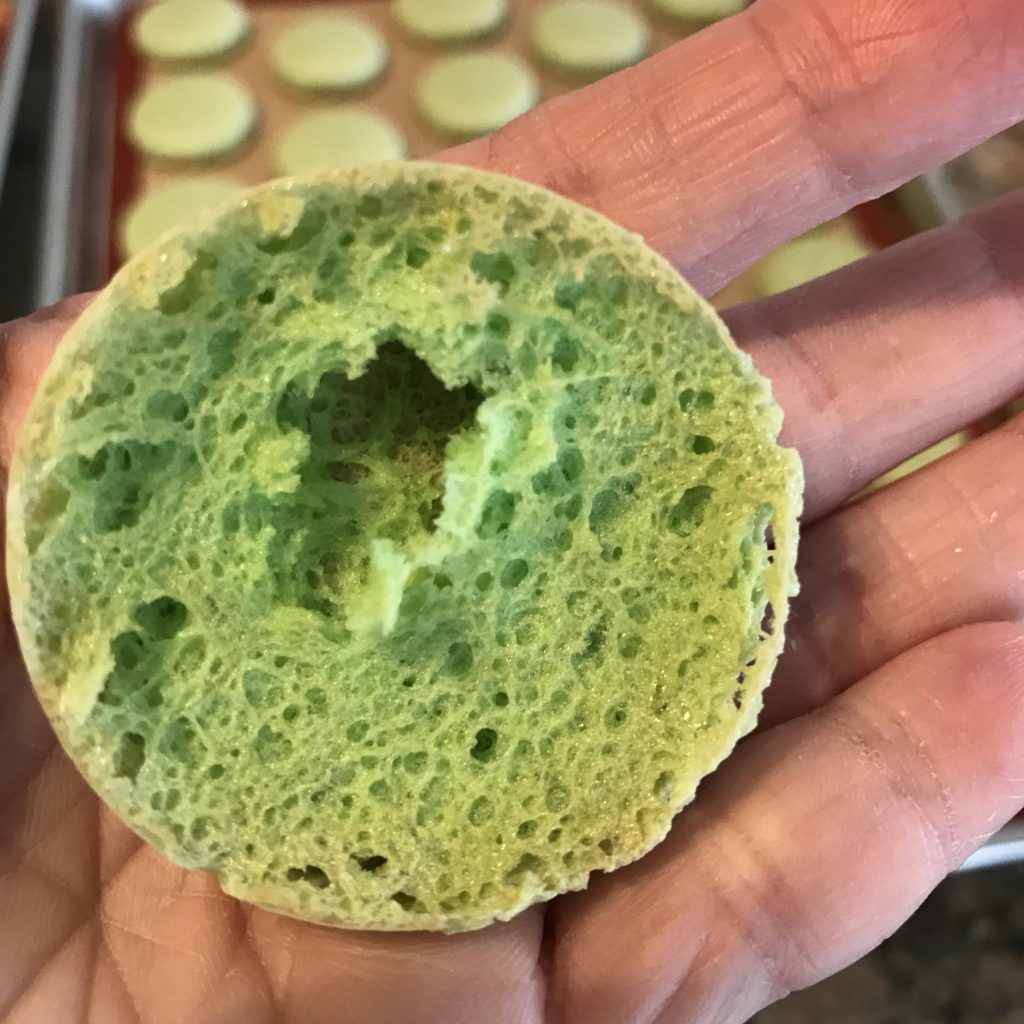
This is a classic sign of simply not baking long enough. The bottom is concave or sticks to the pan upon removal. Next time, bake a little longer. The ones on silicone mats take longer to bake than parchment paper.

Hollow cookies happen for three main reasons: you over mixed your meringue, over mixed your batter, or you under baked. This one was due to over mixing a meringue.
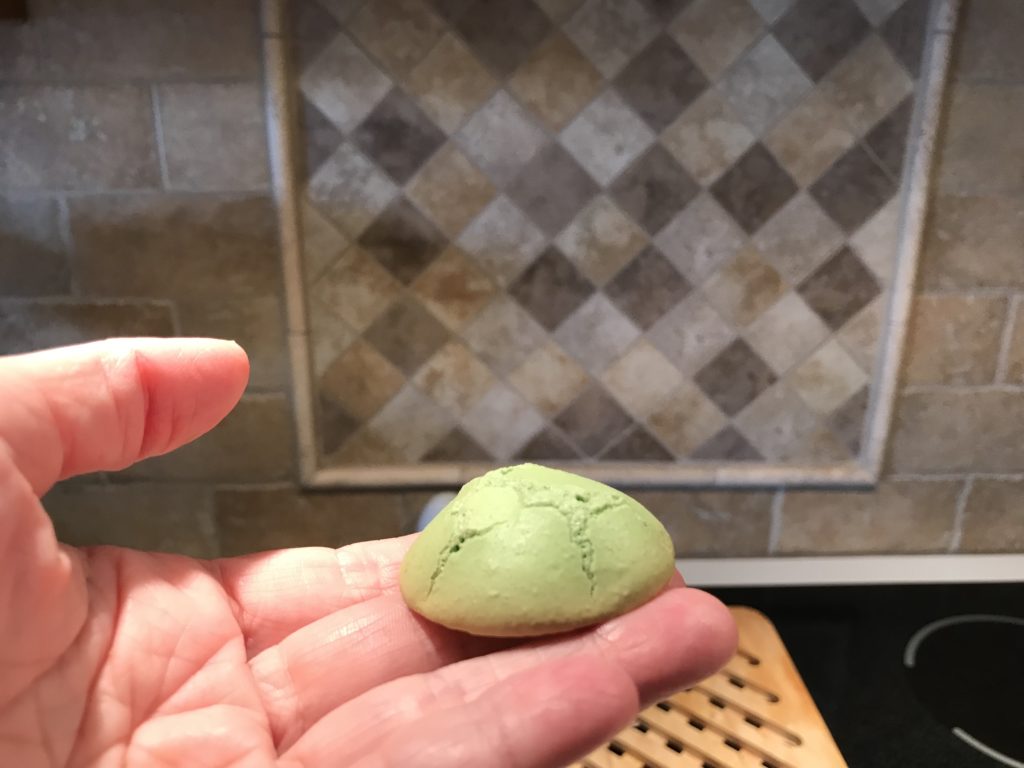
Puffy and footless macaron resulted from no resting and too high of heat.

Too high of a temperature creates uneven rising and lopsided feet.
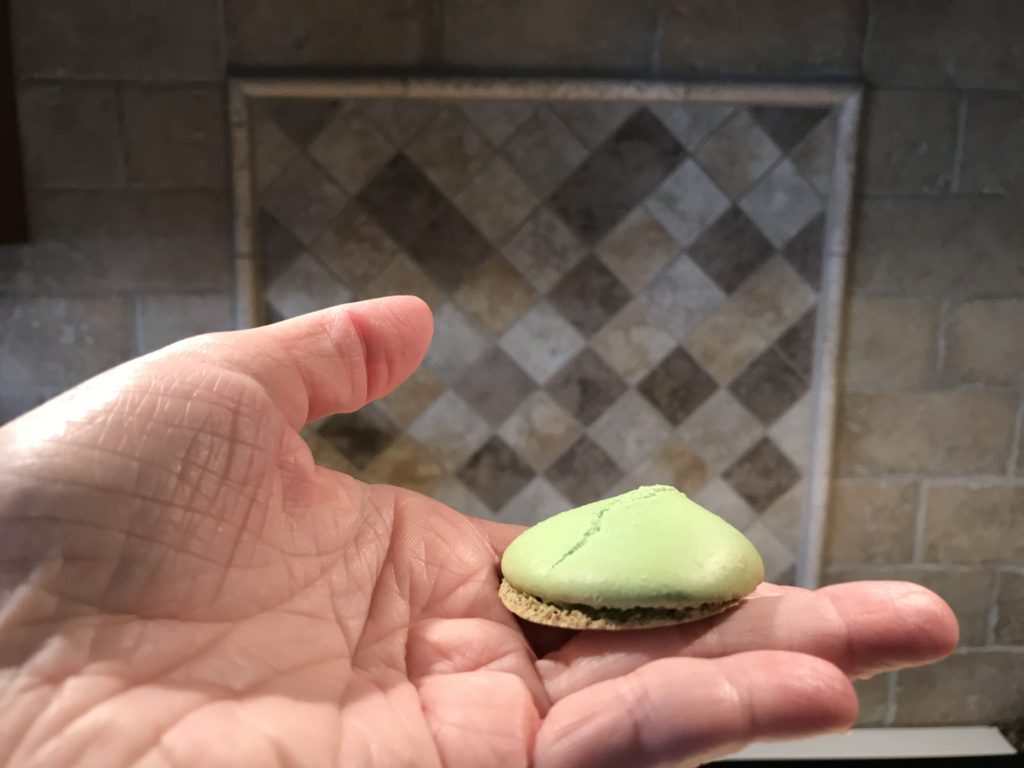
This cookie was not rested enough and baked at too high of a temperature which resulted in lopsided feet, domed tops and cracks.
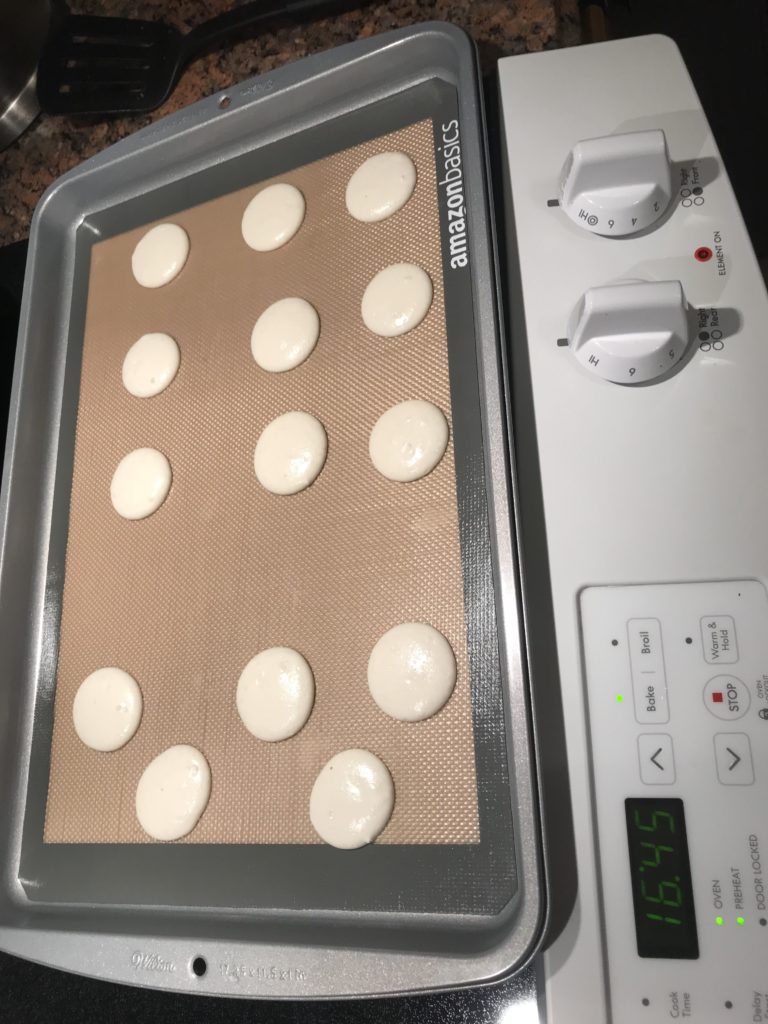
Over mixed macaron batter will be thin and spread out severely like this. At this point, you might as well bake them. You can still eat it or even crunch them up for toppings. They are great with ice cream.

This is an example of an over-mixed macaron. It’s very flat. It is also baked at too high of a temperature if you notice the browning and sticking on the tray.

They will still taste okay. They will be crispy and not very chewy, but they are pleasant enough to eat. Under mixing is always better than over mixing.
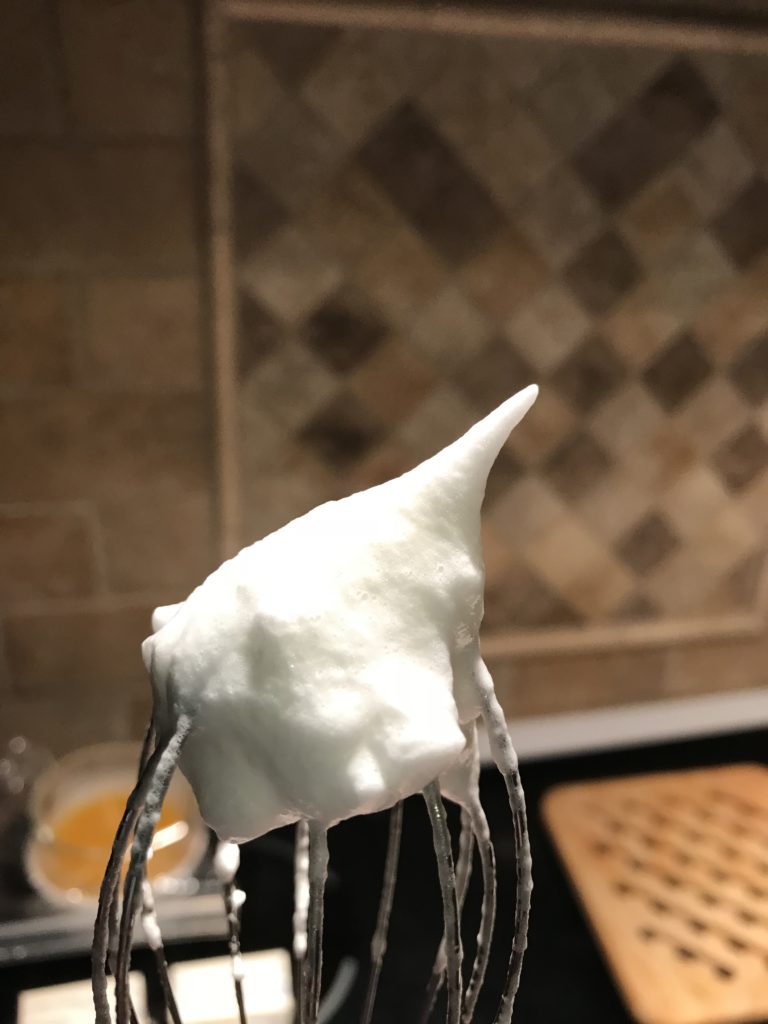
Over whipped egg whites will cause issues, too. This is what they look like. When you over whip egg whites, your meringue will break down in the folding. You can save this by adding another egg white and remixing.
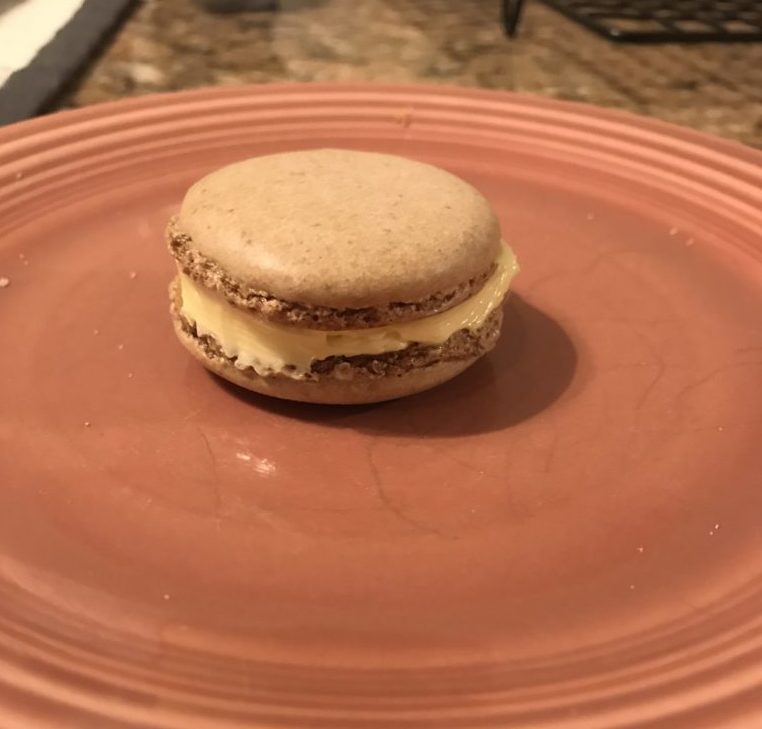
A nearly perfect macaron. You were so close here! However, it was baked at too high of a temperature. It’s quite crunchy. Maturing for several days will soften it. Next time, lower your temperature to the next lowest setting and try again.

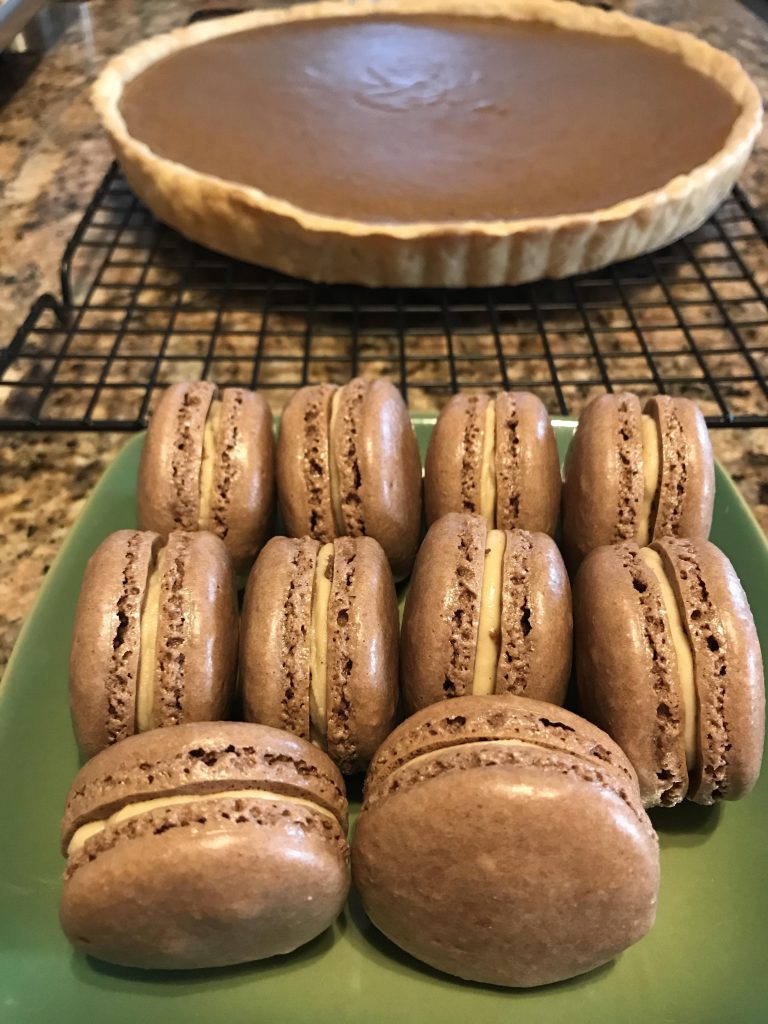
This is the ideal foot. You want straight sides to the feet, like this. Not ruffles like the last two photos. This is the traditional macaron and indicates the sugar is in balance and will not be a sickly sweet shell. The perfect macaron recipe.
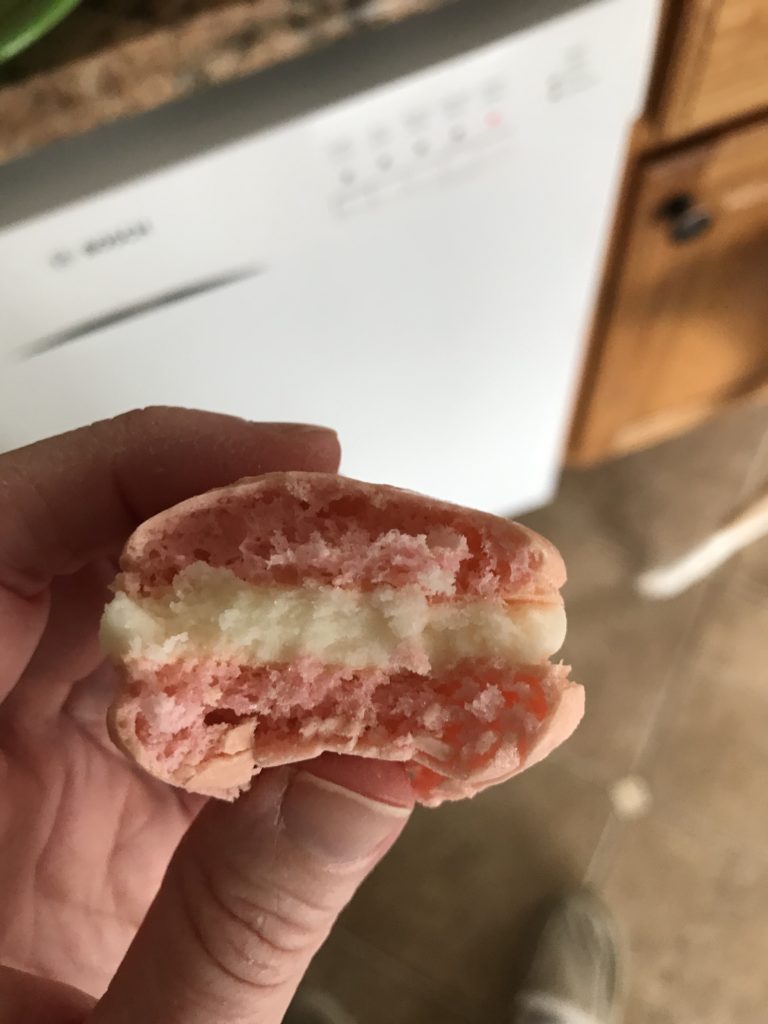
You want nice full macarons. Like this. Don’t worry if they have a pocket of air here or there. It’s just from the mixing process. As long as most of the cookie is full, it will be wonderfully chewy and delicious.
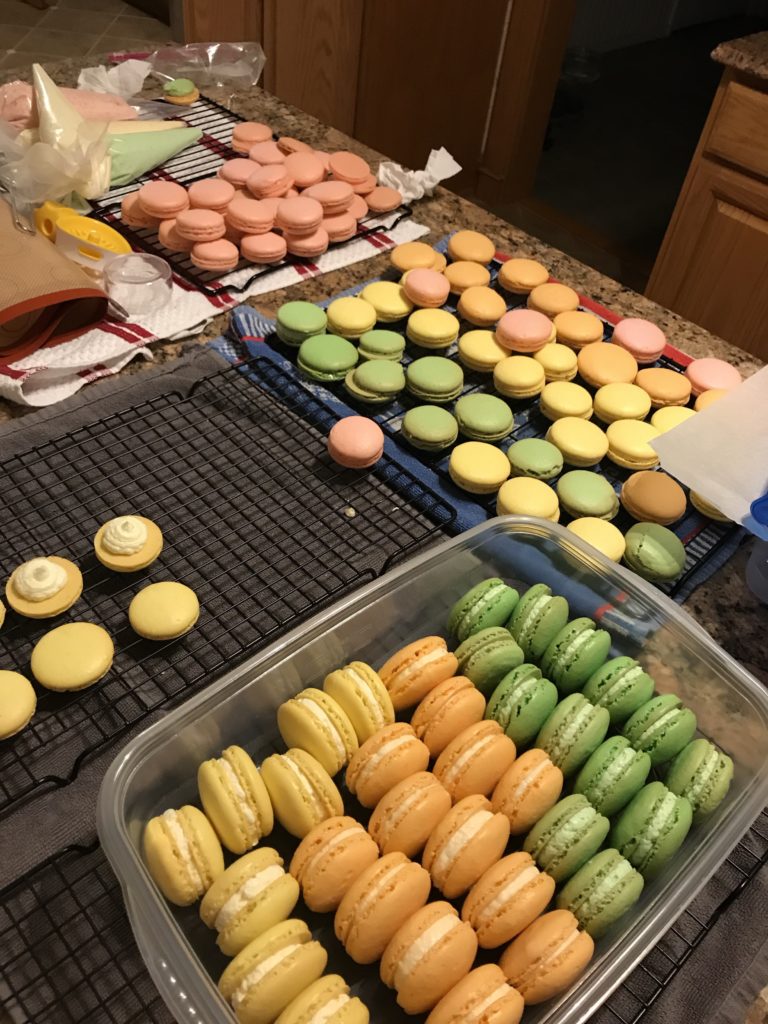
Finally, what you are looking for in a macaron. Shiny exterior, nice straight sides. Overall uniform. Undoubtedly, macarons are frustrating at times. It is also entirely possible to make them, just find a good recipe first. That’s 3/4 of the battle.
Can’t get enough of troublesome macaron shells? Check out this video!
I hope you enjoyed this French macaron troubleshooting guide. Maybe a little laughter at my photos will help you feel brave enough to try them. Between just learning how to use a camera (poorly) and the wonky cookies, it’s a bit amusing to look back on. If you need more help, feel free to comment below or find us on Facebook and Instagram. Jackson loves all macarons. Wonky or lovely, they taste delicious. Unless they are the Americanized ones. Those things are sugary nightmares and should keep dentists in business for years to come.

0 Comments